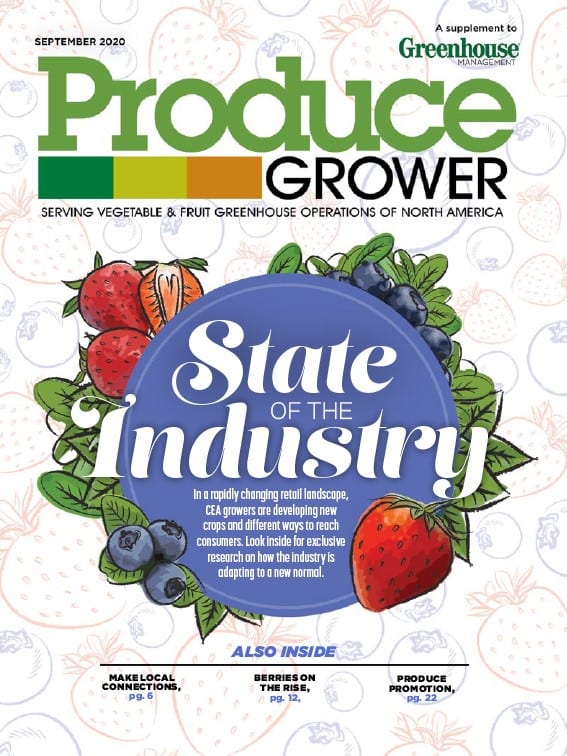

Sweet basil (Ocimum basilicum) is one of the most popular culinary herbs grown in greenhouses and controlled environments. While most sweet basil grown has green foliage, there are a number of cultivars with purple foliage. While the flavor is the same as green-leaved sweet basil cultivars, the dark foliage creates a unique appearance.
Purple basil is a unique culinary herb with a distinctive appearance in addition to great flavor. However, during the winter and early spring, the purple coloration can diminish during production.
One common problem during the winter and early spring is a lack of purple pigmentation. Foliage will often be mottled, with both green and purple coloration. Since purple basil is marketed primarily for its unique coloration, this can reduce the marketability of the crop, as consumers may think the plants are unhealthy or diseased due to the “off” appearance.
Purple-leaved cultivars
Before we discuss strategies to increase purple pigmentation in basil foliage, we first need to consider the cultivar. As plant pathologists say, you need to know what is normal before you know what can be wrong. The majority of purple basil cultivars have leaves with solid purple pigmentation. However, some cultivars do not produce leaves that are solid purple under any condition and the green-purple mottled coloration is normal for the cultivar. While the intensity of purple can vary depending on the growing environment, mottled-leaved purple basil always have green present.

Improving coloration
Purple basil leaf coloration can be improved with the right light management. Light intensity has a strong influence on purple basil coloration. Under low light intensities and low daily light integrals (DLIs), anthocyanin production is lower and, as a result, the green coloration from chlorophyll is more apparent. Alternatively, as the light intensity or DLI increases, anthocyanin production increases and purple leaf coloration intensifies. This explains why purple basil tends to be mottled during the winter and early spring when ambient light levels are low, but not later in the season in the greenhouse or outside in a sunny garden. Since anthocyanin production is diminished with low light, increasing the amount of photosynthetic light is the best way to achieve the best-looking plants. While keeping your greenhouse glazing material clean and minimizing the number of hanging baskets or other superstructures can increase light transmission into the greenhouse, supplemental light is the only method of appreciably increasing light levels in the greenhouse.
A good starting point to increase light intensities in the greenhouse is to provide 50 to 75 µmol·m–2·d–1. High-pressure sodium (HPS) lamps are the most commonly used lamps for providing supplemental light. Light-emitting diodes (LEDs) also work well for promoting basil growth. In addition to light intensity, research shows light quality can affect anthocyanin development. While there is no data on purple basil, we can look to lessons learned from other purple-leaved crops. Researchers at Michigan State University have found that blue light can promote anthocyanin development in red-leaf lettuce and purple fountain grass. A strategy of using LEDs with a higher proportion of blue light could also be useful for improving coloration of purple basil.
Purple basil leaf coloration can be improved with the right light management. Light intensity has a strong influence on purple basil coloration.

The take-home message
Purple basil is a unique culinary herb for controlled environments. If you aren’t getting the color you want, take a look at your selected cultivars and light levels. Be sure to select solid-colored cultivars. Consider using supplemental light if the light intensity or DLI inside your greenhouse is low. These steps can keep your purples from causing the blues!

Explore the September 2020 Issue
Check out more from this issue and find your next story to read.
Latest from Produce Grower
- Chilli thrips (Scirtothrips dorsalis)
- GS1 US Celebrates 50-Year Barcode 'Scanniversary' and Heralds Next-Generation Barcode to Support Modern Commerce
- University of Florida offers Greenhouse Training Online program on irrigation water
- Flower trends in full bloom
- Nominate an outstanding leader
- New Florida Extension Agent Will Teach Stakeholders About Food Safety
- Paint it black
- Regular checkups





